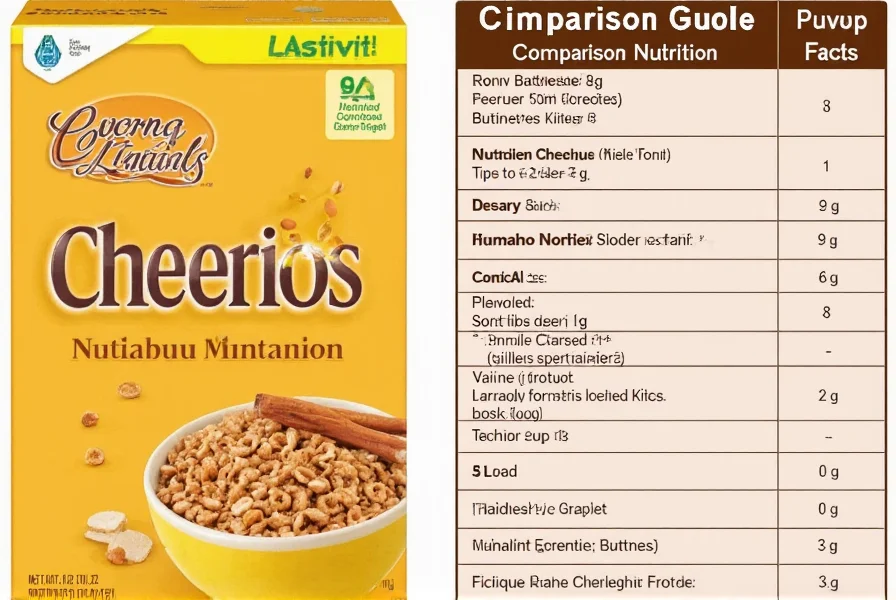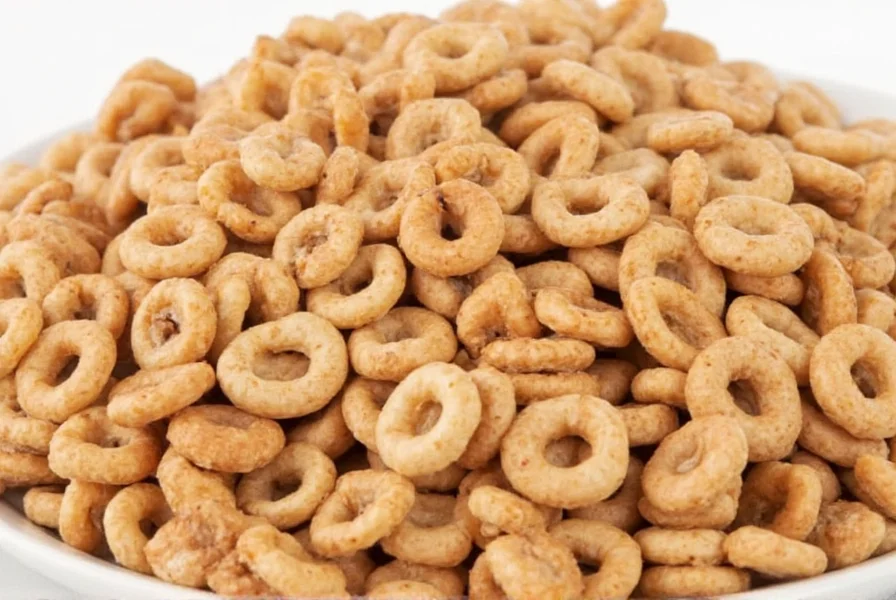Cinnamon Cheerios represent one of the most successful flavor variations in the Cheerios product line, capturing a dedicated following since their introduction. This distinctive cereal combines the wholesome foundation of whole grain oats with a warm cinnamon flavor that appeals to both children and adults seeking a comforting breakfast option. Understanding what sets Cinnamon Cheerios apart requires examining their composition, nutritional profile, and how they compare to other popular cereal options.
Product History and Development
General Mills first introduced Cinnamon Cheerios in 2003 as a limited-time offering during the holiday season. The product's immediate popularity transformed it from a seasonal item to a permanent fixture in the Cheerios lineup by 2005. This trajectory mirrors other successful Cheerios variations, though Cinnamon Cheerios carved out a unique niche by offering a spice-forward alternative to the dominant honey-flavored variant.
The development of cinnamon cheerios ingredients list focused on creating an authentic cinnamon experience without artificial flavors. Unlike many cinnamon-flavored products that rely heavily on sugar to carry the spice, Cinnamon Cheerios maintain the signature Cheerios texture while delivering a balanced cinnamon profile that doesn't overwhelm the underlying oat flavor.
Nutritional Profile Analysis
When evaluating cinnamon cheerios nutrition facts, several key points emerge. A standard 3/4 cup (28g) serving contains 100 calories, 1g of fat, 22g of carbohydrates, 2g of fiber, and 10g of sugar. This sugar content sits between original Cheerios (1g of sugar) and Honey Nut Cheerios (12g of sugar), making it a moderate-sweetness option.
| Nutrient | Cinnamon Cheerios | Original Cheerios | Honey Nut Cheerios |
|---|---|---|---|
| Calories (per 28g) | 100 | 100 | 110 |
| Sugar (g) | 10 | 1 | 12 |
| Fiber (g) | 2 | 3 | 2 |
| Protein (g) | 3 | 3 | 2 |
One frequently asked question is are cinnamon cheerios gluten free. Since 2014, General Mills has certified Cinnamon Cheerios as gluten-free, using dedicated facilities to prevent cross-contamination. This makes them suitable for those with celiac disease or gluten sensitivity, unlike many other flavored cereals that may contain gluten-containing ingredients.
Taste Profile and Sensory Experience
Cinnamon Cheerios deliver a distinctive flavor experience that sets them apart from other Cheerios varieties. The cinnamon flavoring provides a warm, slightly spicy note that complements rather than overwhelms the underlying whole grain oat taste. When prepared with milk, the cinnamon flavor infuses the milk, creating a pleasant cinnamon milk that many consumers enjoy drinking after finishing the cereal.
The texture remains consistent with other Cheerios varieties—light, crispy O's that maintain their structure reasonably well in milk without becoming soggy too quickly. This texture consistency across the Cheerios line helps maintain brand recognition while allowing for flavor differentiation.
Cinnamon Cheerios vs Honey Nut Cheerios: A Detailed Comparison
When consumers search for cinnamon cheerios vs honey nut cheerios, they're typically weighing flavor preferences against nutritional considerations. While both are popular Cheerios variations, they serve different taste profiles and nutritional needs.
Honey Nut Cheerios feature a honey-sweetened profile with a subtle nut flavor (despite containing no actual nuts), while Cinnamon Cheerios offer a warm spice-forward taste. Nutritionally, Honey Nut Cheerios contain slightly more sugar (12g vs 10g per serving) and less fiber (2g vs 3g in original Cheerios, though both flavored varieties have 2g fiber).
Market research indicates that Cinnamon Cheerios appeal to consumers seeking a less sweet option than Honey Nut Cheerios but with more flavor complexity than original Cheerios. This positioning has helped Cinnamon Cheerios maintain steady sales despite the overwhelming popularity of Honey Nut Cheerios.
Creative Usage and Recipe Applications
Beyond traditional breakfast consumption, cinnamon cheerios recipes have expanded into various culinary applications. The cereal's cinnamon flavor makes it particularly suitable for:
- Yogurt parfaits with Greek yogurt and fresh apples
- Crunchy toppings for baked apples or sweet potato dishes
- Crusted coatings for baked chicken or fish
- Trail mix components with nuts and dried fruit
- Baking ingredient in muffins and quick breads
Professional chefs have incorporated Cinnamon Cheerios into restaurant menus, particularly in breakfast and brunch offerings. The cereal's consistent texture and flavor make it a reliable ingredient for recipes requiring a crunchy element with complementary flavor.

Consumer Reception and Market Position
Since becoming a permanent offering, Cinnamon Cheerios have developed a loyal following. Market analysis shows they occupy a unique space in the cereal aisle as one of the few spice-flavored mainstream cereals. While Honey Nut Cheerios dominate sales in the Cheerios line, Cinnamon Cheerios maintain consistent year-round sales without the seasonal fluctuations seen in many limited-edition cereals.
Consumer reviews frequently highlight the comforting flavor combination and the cereal's suitability for adults who prefer less sweetness than Honey Nut Cheerios provides. The gluten-free certification has also expanded their appeal to health-conscious consumers and those with dietary restrictions.
Frequently Asked Questions
Are Cinnamon Cheerios vegan?
Yes, Cinnamon Cheerios are vegan-friendly as they contain no animal-derived ingredients. Unlike Honey Nut Cheerios which contain honey (an animal product), Cinnamon Cheerios use plant-based sweeteners and flavorings.
How much sugar is in Cinnamon Cheerios compared to other cereals?
Cinnamon Cheerios contain 10g of sugar per 3/4 cup (28g) serving. This is less than Honey Nut Cheerios (12g), significantly less than many children's cereals (which often contain 12-15g), but more than original Cheerios (1g). The sugar content places them in the moderate-sweetness category among breakfast cereals.
Do Cinnamon Cheerios contain real cinnamon?
Yes, Cinnamon Cheerios contain real cinnamon as part of their natural flavoring. The ingredient list specifies "natural flavor" which includes cinnamon, though the exact proportion isn't disclosed. The cinnamon flavor is noticeable but balanced with sweetness, creating the distinctive taste profile consumers recognize.
Can Cinnamon Cheerios be part of a healthy diet?
Cinnamon Cheerios can be part of a balanced diet when consumed in appropriate portions. They provide whole grains, some fiber, and are fortified with vitamins and minerals. However, with 10g of sugar per serving, they should be enjoyed in moderation, particularly for those monitoring sugar intake. Pairing them with protein sources like milk or yogurt can create a more balanced meal.
Why did General Mills make Cinnamon Cheerios a permanent product?
General Mills made Cinnamon Cheerios a permanent product due to strong consumer demand after its initial 2003 holiday season introduction. Market research showed consistent positive reception, particularly from adult consumers seeking a less sweet alternative to Honey Nut Cheerios with a distinctive flavor profile. The product filled a gap in the market for spice-flavored breakfast cereals with broad appeal.











 浙公网安备
33010002000092号
浙公网安备
33010002000092号 浙B2-20120091-4
浙B2-20120091-4